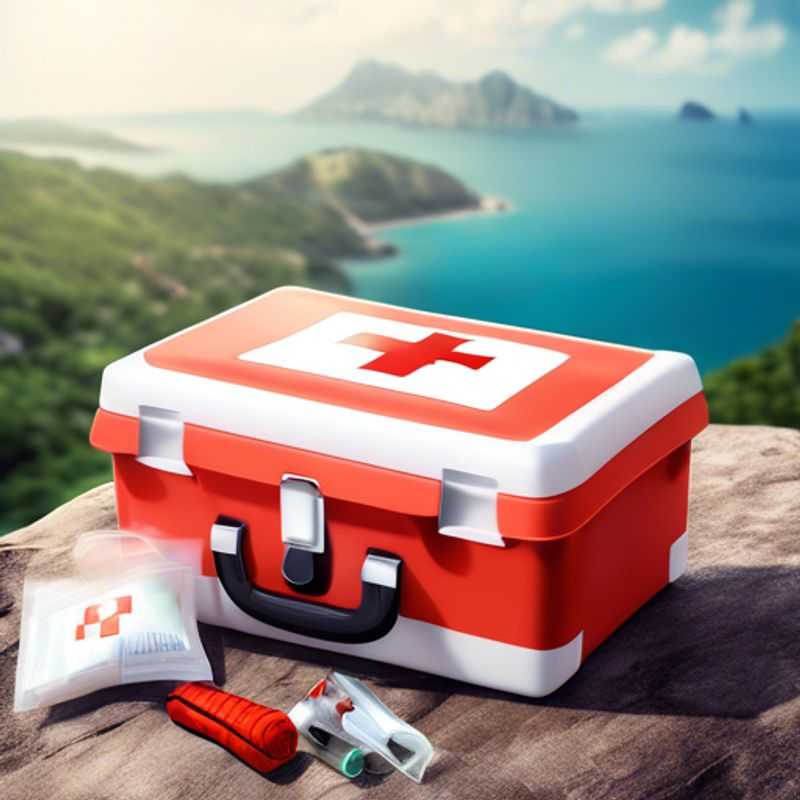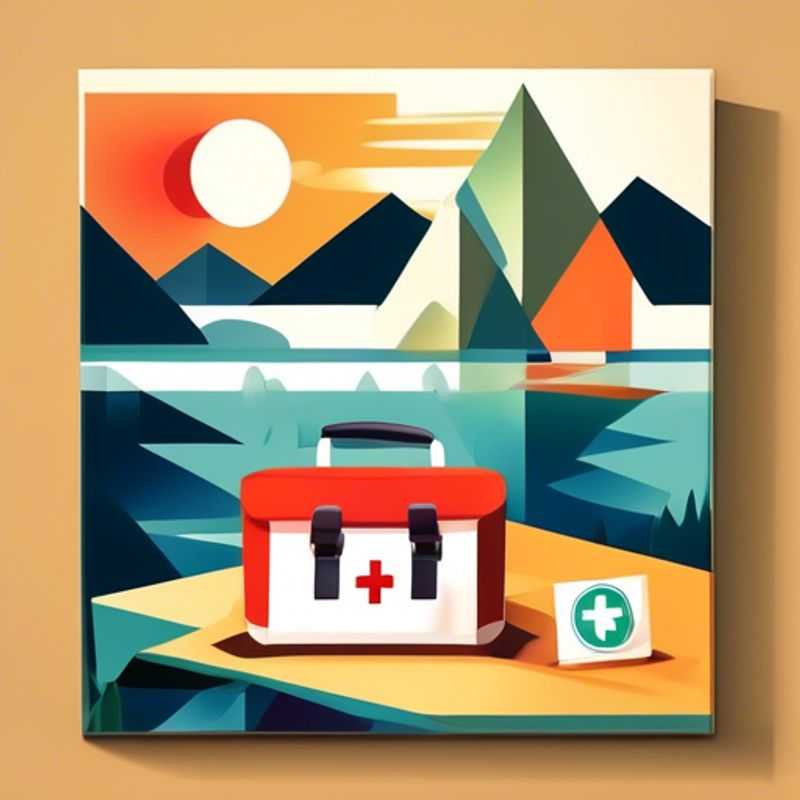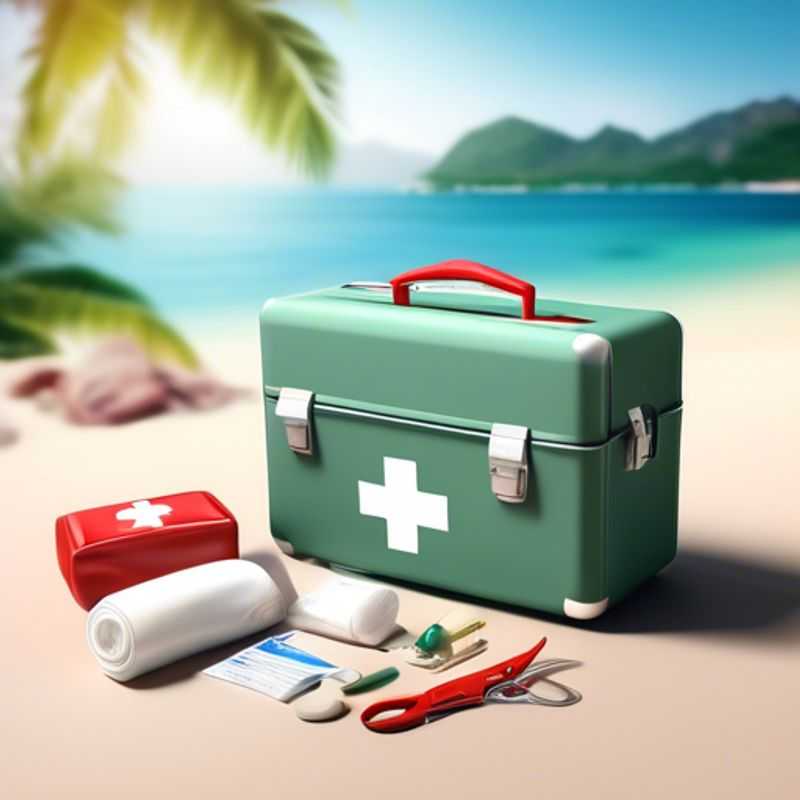5 Essential Tips for Choosing the Right First Aid Kit for Your Needs

5 Essential Tips for Choosing the Right First Aid Kit: A Guide for Beginners
Ready to equip yourself with the essentials for any emergency? Buying a first aid kit is a smart move, but before you click "add to cart," there are a few key things to keep in mind. Here are my top five tips to make sure you're getting a kit that's perfect for your needs and will actually be useful when you need it most.
1. Destination, Destination, Destination:
Before purchasing First Aid Kit
- Determine the specific contents needed based on intended use and location. Think about where you'll be using the kit (home, car, hiking, etc.) and what types of injuries or illnesses you're most likely to encounter. For instance, a kit for hiking might need extra supplies for blisters and insect stings, while a home kit might focus on cuts, burns, and common ailments.
- Consider the size and portability of the first aid kit for ease of transport. A compact kit is ideal for travel or emergencies, while a larger kit might be better suited for home use.
- Ensure the kit contains up-to-date and unexpired medical supplies. Check the expiration dates of all items and replace anything that's expired. You can typically find the expiration dates on the packaging or labels of the individual items.
- Research the recommended first aid kit guidelines for your region or activity. Many organizations, like the Red Cross, have guidelines for assembling a comprehensive first aid kit. These guidelines can help you determine the essential items to include based on your specific needs.
- Check that the kit includes instructions for proper use of the contents. Knowing how to use the supplies effectively is crucial in an emergency. If the kit doesn't include instructions, you can find resources online or at your local pharmacy.

Shop Smart: Matching Your Needs to Your Purchases
When determining the specific contents needed based on intended use and location, it is essential to consider the purpose of your shopping. Define the primary function of the items you need, whether it's for personal use, gifting, or business purposes. This will guide your selection process effectively.
Next, assess the location where the items will be used. Different environments may require different features; for example, outdoor gear should be durable and weather-resistant, while office supplies may need to be more professional and sleek.
Additionally, consider any storage limitations you might have. If space is tight, opt for multifunctional items that serve more than one purpose. This not only saves space but also money in the long run.
When planning your shopping, take note of any paid activities that might be involved, such as delivery fees, assembly costs for furniture, or subscription services for items that require regular replenishment. Keep these in mind to avoid overspending.
Lastly, always look for sustainable options that are available locally. Not only does this support the local economy, but it often leads to better quality products that are tailored to your region's needs.

First Aid Kit Size and Portability: Picking the Right Fit for Your Travels
When choosing a first aid kit, consider its size and portability for ease of transport. If you're planning on hiking or camping, a compact and lightweight kit is ideal. For car trips or home use, a larger kit with more supplies may be more suitable. Remember, the size and weight of the kit will influence its portability, especially if you're carrying it on foot. Consider the context of your activities and the potential hazards you may encounter when deciding on the size of your first aid kit.

Keep Your First Aid Kit Fresh: Checking for Expired and Updated Supplies
Ensuring your medical kit is stocked with up-to-date and unexpired supplies is crucial for preparedness. Regularly check the expiration dates of all medications, bandages, and other medical supplies. Replace anything that has expired or is nearing its expiration date. This ensures you have the most effective and safe supplies in case of an emergency.
While the initial investment in a well-stocked medical kit might seem costly, consider it an investment in your safety and well-being. Prioritize essentials such as pain relievers, antibiotic ointment, antiseptic wipes, bandages, and basic first-aid supplies. Avoid buying unnecessary items that you may not use, saving both money and space.
Regularly review and update your medical kit based on your individual needs and the changing seasons. For example, consider adding items specific to your location or activities, such as sunscreen, insect repellent, or a personal locator beacon. Remember to always consult with a healthcare professional to ensure you have the right supplies for your specific situation.

First Aid Kit Essentials: Tailoring Your Supplies for Safety
Before embarking on any adventure, it's crucial to be prepared for the unexpected. This is where a well-stocked first aid kit comes in handy. To ensure you have the right supplies, research the recommended guidelines for your region or activity. Consider factors like the terrain, climate, and potential risks involved.
For instance, a first aid kit for hiking in a remote area will differ significantly from one for a city picnic. Researching local guidelines helps you avoid overpacking or, worse, overlooking essential items.
The internet offers valuable resources, with organizations like the Red Cross providing detailed checklists and guidance on assembling a comprehensive kit. These resources can be invaluable in preparing for various situations.
Remember, a well-equipped first aid kit can be a lifesaver, ensuring you have the necessary tools to address minor injuries or emergencies until professional help arrives.

Don't Get Caught Short-Handed: Why Clear Instructions Are Crucial
When shopping for a kit, it's crucial to ensure it includes instructions for proper use. This is vital for safety, effectiveness, and getting the most out of your purchase. Always read the instructions thoroughly before using the kit, especially if it contains chemicals or sharp objects. This will help you understand how to use the kit safely and effectively, minimizing risks of accidents or misuse. Remember, safety should always be your top priority!
